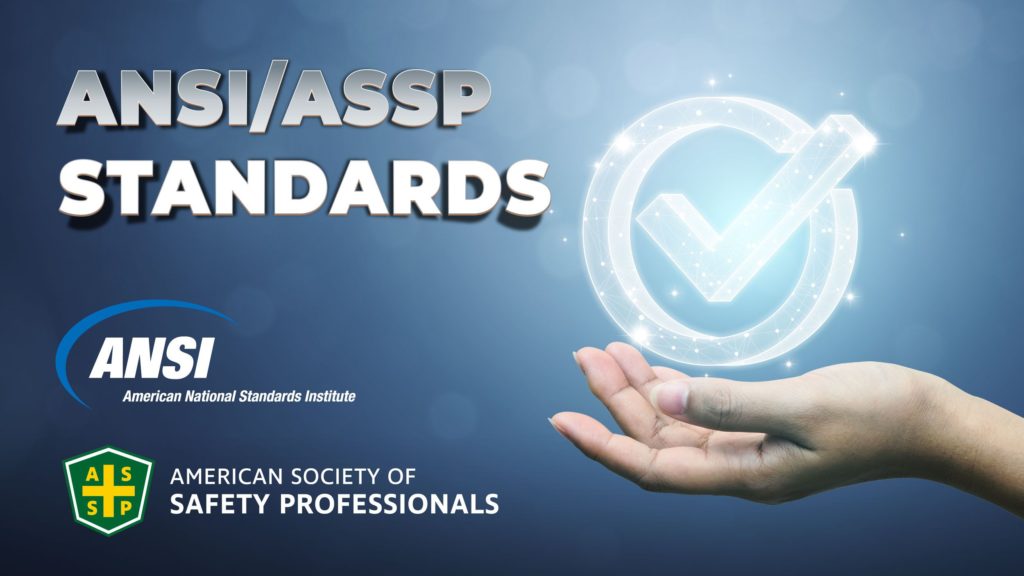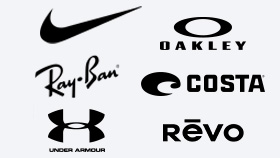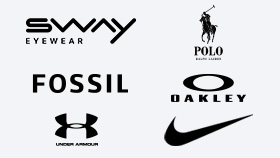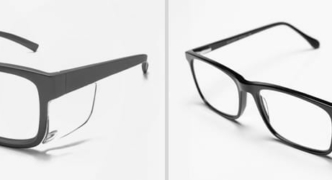
Occupational safety standards apply across industries. A business may abide by voluntary consensus standards maintained by the American National Standards Institute, American Society of Safety Professionals, International Organization for Standardization, or other standards bodies. The Occupational Safety and Health Administration in the United States and other national agencies regulate workplace safety, including the use of fall protection equipment. Learn more about conformance with the leading ANSI, ASSP and ISO occupational safety and health standards.


What Is ASSP OSH Management
The ASSP publishes standards for occupational health and safety management. These systems identify health and safety risks in any environment to reduce the potential for accidents to occur while increasing compliance with health and safety best practices and regulatory requirements.
The main ASSP OSH management standard is Z10.0 OSH. This standard is also coordinated with ANSI and is the leading approach to OSH management developed in the United States. Businesses that operate within this country may adhere to this standard or pursue conformance with international standards.
Businesses that want to meet international supply chain requirements may prefer to work towards conformance with ISO 45001 standards, which are similar to Z10.0 standards. The latest version of the ANSI/ASSP standard is Z10.0-2019 Occupational Health and Safety Management Systems.
ANSI/ASSP Z10.0
The updated standard released by the Z10 standard committee takes a more comprehensive approach to the dynamic, interrelated processes of most workflows. This version of the standard has 10 sections, whereas the original Z10 standard published in 2005 had only seven sections.
The ANSI/ASSP Z10.0-2019 standard aligns more closely with ISO 45001:2018, Occupational Health and Safety Management Systems. Organizations that achieve conformity with this standard will satisfy many requirements for compliance with the comparable ISO standard.
The new standard emphasizes occupational health in addition to physical hazards, focuses on fatal and serious injury and illness prevention, identifies opportunities in addition to issues and risks and emphasizes worker participation.
What Is the Z10.0 Standard?
The Z10.0 standard was introduced in 2005 and revised in 2012 and 2019. The latest version of the standard defines scope, purpose and application before citing references. Defining the context of an organization and other strategic considerations is also included in Z10.0-2019.
Subsequent sections address management leadership, worker participation, planning, support, implementation and operation, evaluation and corrective action and management review. In order to adhere to this standard, it is first necessary to understand all of the clauses or sections and then determine how to satisfy these requirements.
Why Use the Z10.0 Standard?
Using the ANSI/ASSP Z10.0-2019 is one of the best ways to increase the safety of any operation. This holistic standard can be applied to meet the unique needs of a business in any field or industry. Companies that implement this standard also meet many of the requirements for the ISO 45001 standard.
The Z10.0 standard is a set of macro requirements for processes. Recognizing the interrelated aspects of many workflow processes is necessary for a comprehensive approach to safety. A system-thinking approach extends from budgeting and planning through operations and monitoring.
Implementation
Safety standard implementation starts with a review of the standard and an audit of current practices. Management and workers should work together to assess the hazards and opportunities associated with every aspect of operations. Audits should extend from general practices to individual factors, such as use of personal protective equipment.
Once a plan has been developed, a business must train employees and produce a manual and procedures for health and safety. These documents should cover the use of a fall protection harness or other relevant PPE. Internal safety audits or external third-party verification can determine whether a standard has been properly implemented.
What Is ISO 45001?
The ISO 45001 standard is an international standard developed to replace the former British Standard benchmark OHSAS 18001. The OHSAS Project Group published the 18000 Series in 1999 and updated these standards in 2007. The new ISO 45001 standard published in March 2018 is intended to supplant OHSAS 18001.
A three-year transition period was initially allotted for businesses to migrate to the new standard. This period has been extended from March 2021 through September 11, 2021 to allow businesses to demonstrate conformance. To maintain certification, it may be necessary to update some processes to meet the new ISO 45001 standard.
Why Use ISO 45001?
The ISO 45001 standard is a relevant standard for businesses located anywhere in the world that seek to participate in global supply chains. Stakeholders seeking to engage in international product sourcing, trade and sales should go beyond OSHA fall protection and the ANSI/ASSP Z10.0-2019 standard and seek ISO certification.
The ISO 45001 standard is dynamic and process-based. This standard also factors in safety opportunities and the views of interested parties such as workers, suppliers, subcontractors, clients and regulatory authorities.
Get Certified To ISO 45001
A business should determine whether to pursue the ISO 45001 internally, make a self-declaration of conformance or obtain third-party verification through a registrar. Regardless of the approach toward certification, it is important to review and adhere to all relevant sections of the standard.
It is necessary to have operations audited and approved by a registrar to advertise ISO 45001 certification. A business may need to correct any nonconformances and pass surveillance audits every six to twelve months thereafter.
FAQs
Which safety standards cover fall protection equipment?
Fall protection clauses are included in most occupational health and safety standards. The ANSI/ASSP Z350 series of fall protection and fall restraint standards directly apply to accident prevention and the use of PPE to control fall risks. International safety standards such as ISO 45001 also extend to fall protection.
How do I determine if equipment is safety rated?
The product description and markings on equipment indicate safety ratings. Many articles of PPE are designed to meet ANSI standards or OSHA requirements. The use of protective equipment to reduce workers’ risks of accidents or exposure to hazardous materials is an important aspect of occupational health and safety management systems.
How can a business achieve safety standard conformance?
There are three types of conformance with safety standards: an internal focus on occupational health and safety, a self-declaration of conformance and a third-party verified registration. Training workers to use appropriate fall prevention and safety equipment is a significant step towards meeting the requirements for any relevant workplace safety standard.
What is the latest ANSI/ASSP Z10.0 standard?
The most recent version of the ANSI/ASSP Z10.0 standard was published in 2019. This standard was introduced in 2005 and revised in 2012. ANSI/ASSP Z10.0-2019 promotes safety across dynamic, interrelated processes and encourages management to identify opportunities to promote safety as well as issues and risks.
Does ISO 45001 replace the OHSAS 28001 standard?
ISO 45001 was published in March 2018 with an allowance for a three-year transition period. The transition was scheduled to take place by March 2021, but has been extended to September 11, 2021. Businesses should plan to migrate to ISO 45001 to retain a valid occupational health and safety standard. Fall protection equipment is crucial for occupational safety in many fields. An occupational health and safety plan should specify protective equipment for all identified hazards. Workers should be trained in safety best practices and the use of PPE. Complete checklists and internal safety audits to pursue ongoing compliance.

































